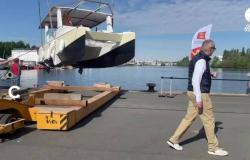Ted and Anne Carret, opticians in Lons-le-Saunier and Champagnole (Atol), created the association Faire ça voir in 2017. “Its objective is to raise awareness of the various vision-related disorders: dyslexia, color blindness, myopia, low vision, ophthalmologic migraine, and especially the compensation solutions that exist,” develops Ted Carret. These disorders affect 20 million French people.
To fight against dyslexia, the professional recalls that there are glasses with electronic lenses, lamps and the method of treating dysproprioception. The association can participate in financing these solutions.
Ted Carret has just responded to a call for projects in the “Better care” category to help 100 children with dyslexia and the Mutualia mutual insurance company has selected him. “We won 5,000 euros,” rejoices the Lédonian. In addition to this endowment fund, we have planned an additional financing budget to support the people concerned, thanks to memberships and donations…”
The association operates throughout France. It has 80 relays.
To find out more: www.fairecavoir.fr, contact: [email protected]
In numbers
3.2 million visually impaired/blind people. Professionals and technical aids exist to maintain autonomy.
5 million dyslexics. When the letters get confused, glasses with electronic lenses improve reading quality and speed.
5 million French people affected by color blindness. Special tinted lenses restore contrast.
15%. Acunis filters can relieve between 10 to 15% of the population suffering from ophthalmic migraines.
50% of children will suffer from myopia in 2050. Curbing it is essential from the age of 7. For this, there are corrective lenses and contact lenses.
400,000 falls per year. Connected glasses, created to detect falls and notify emergency services and family if necessary, exist.









